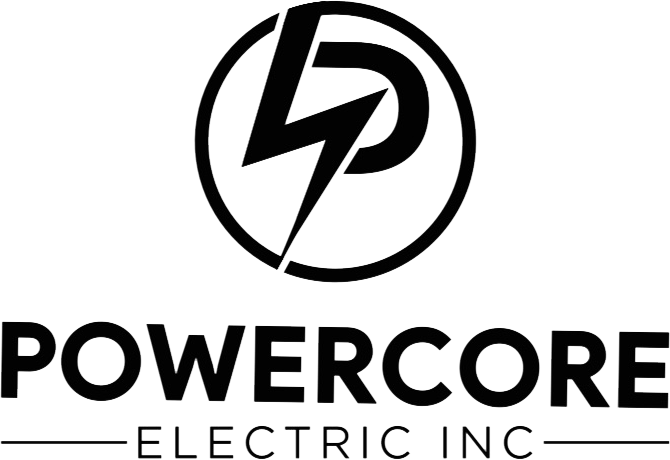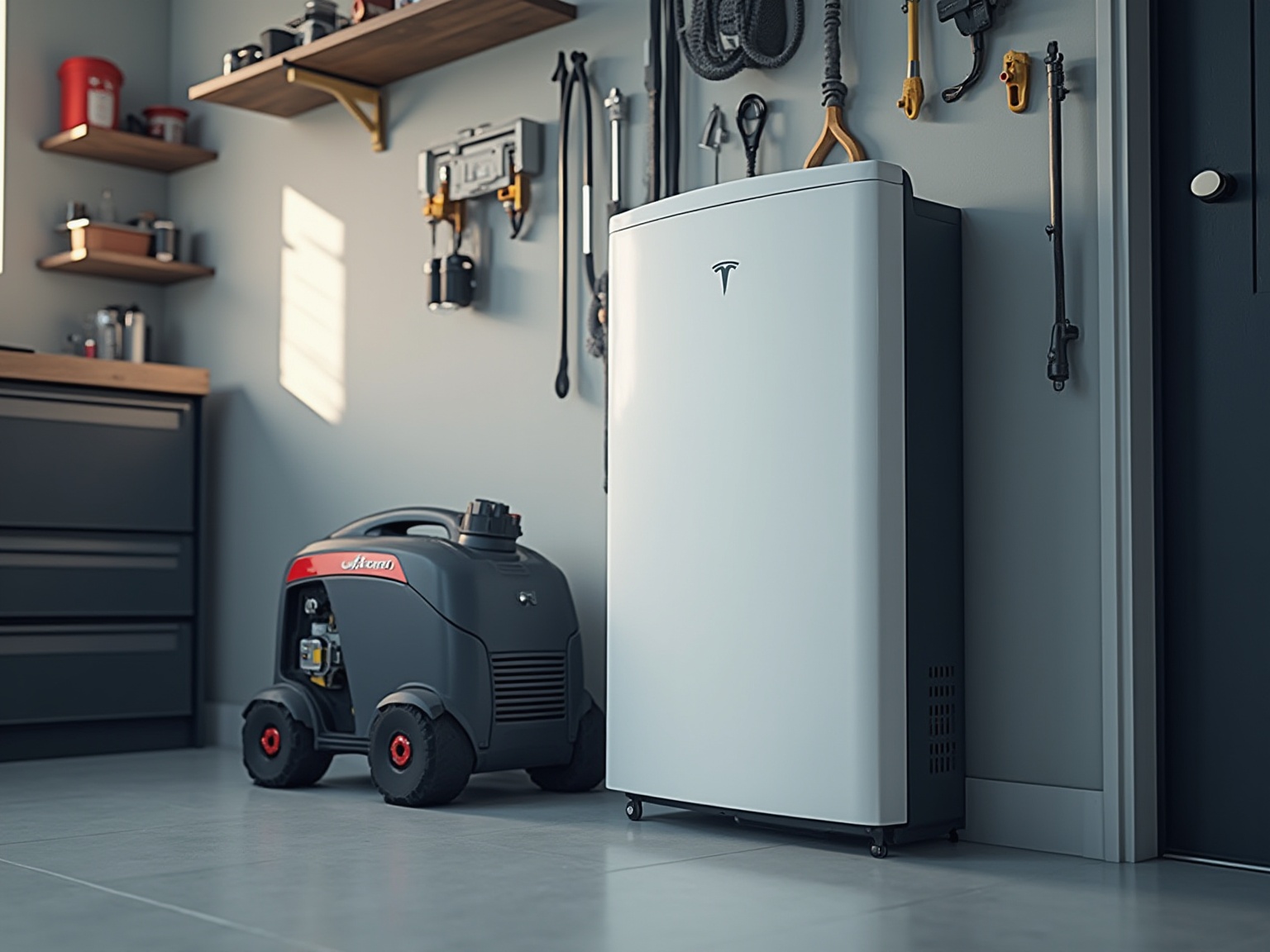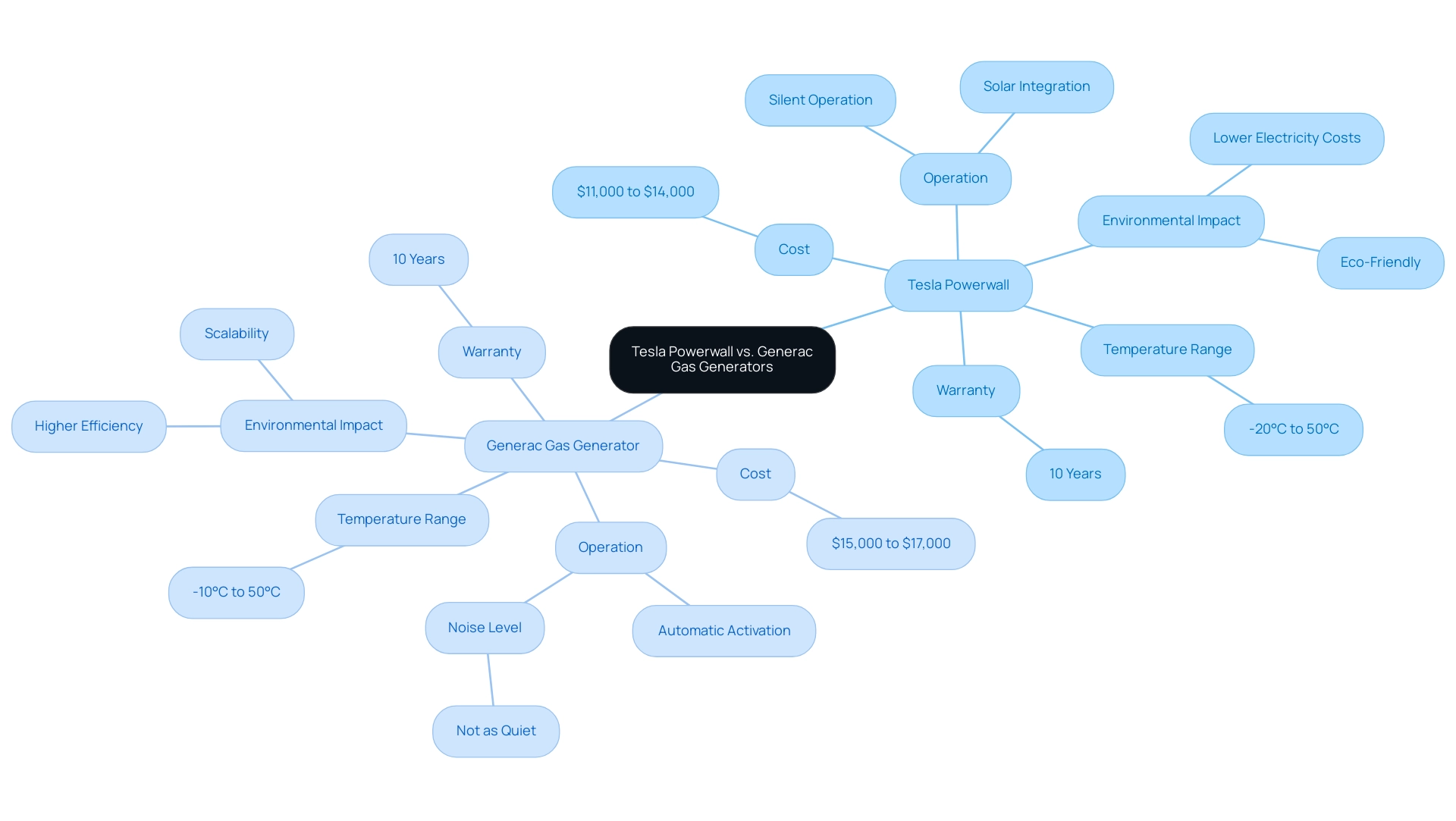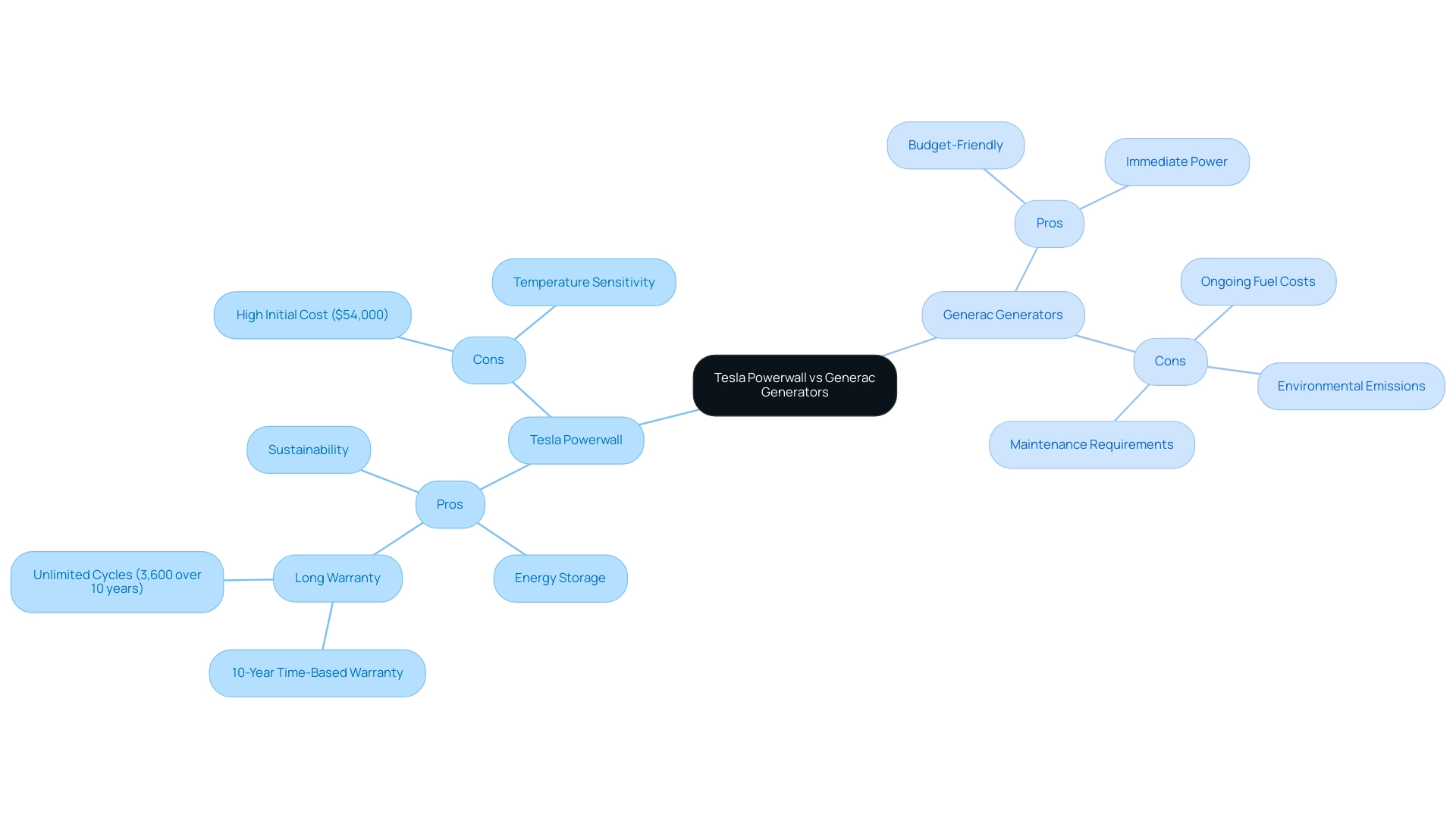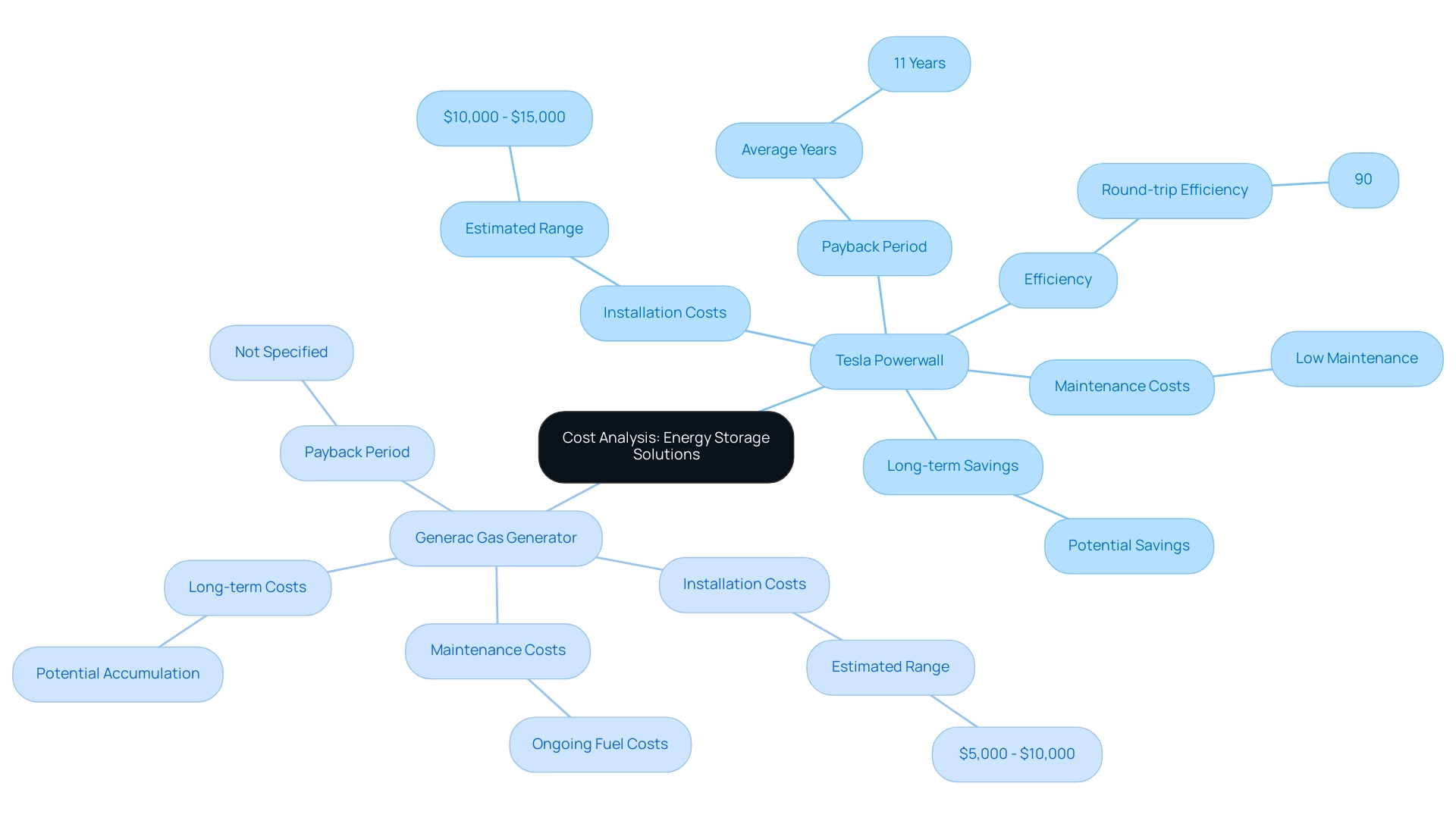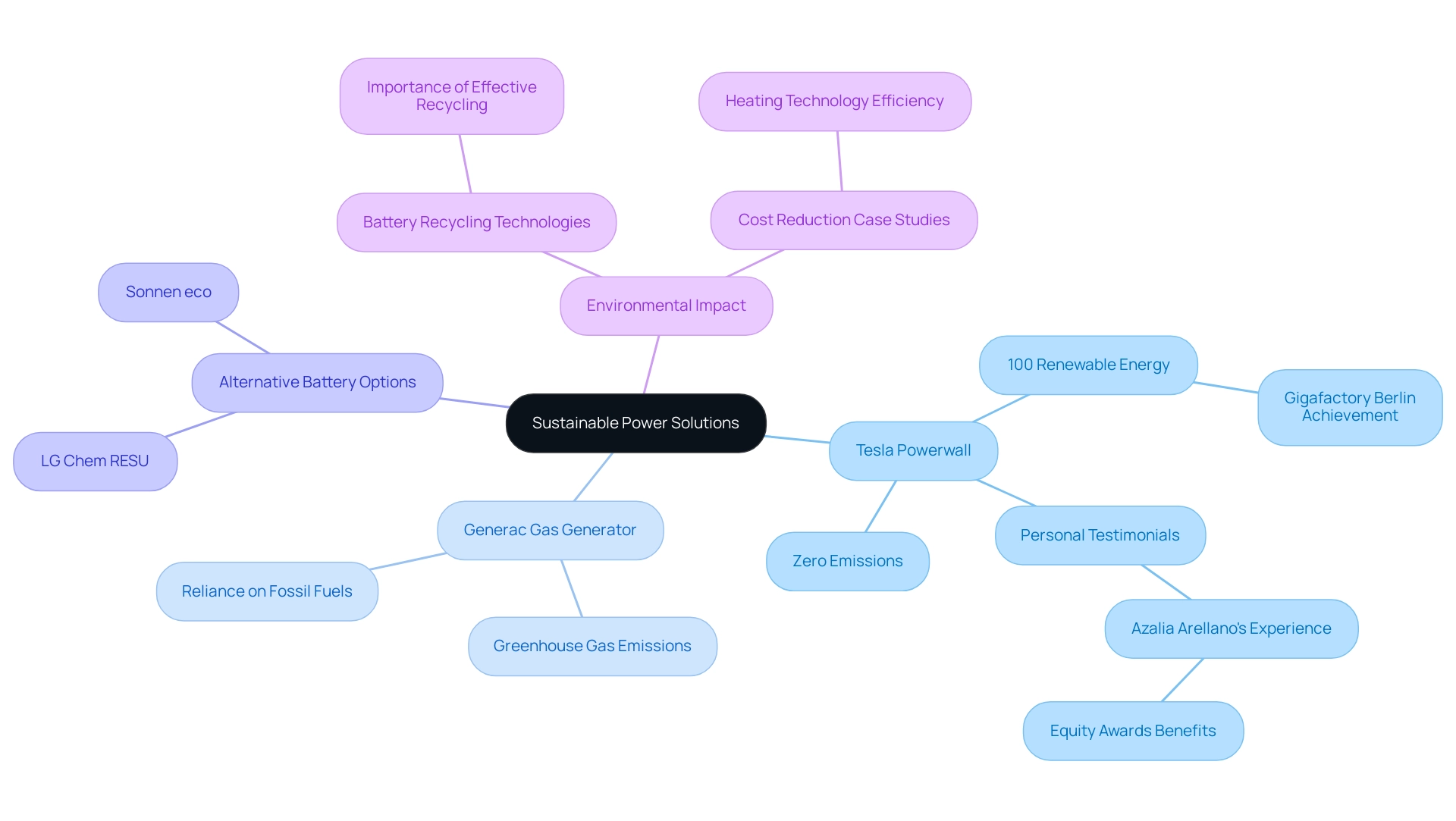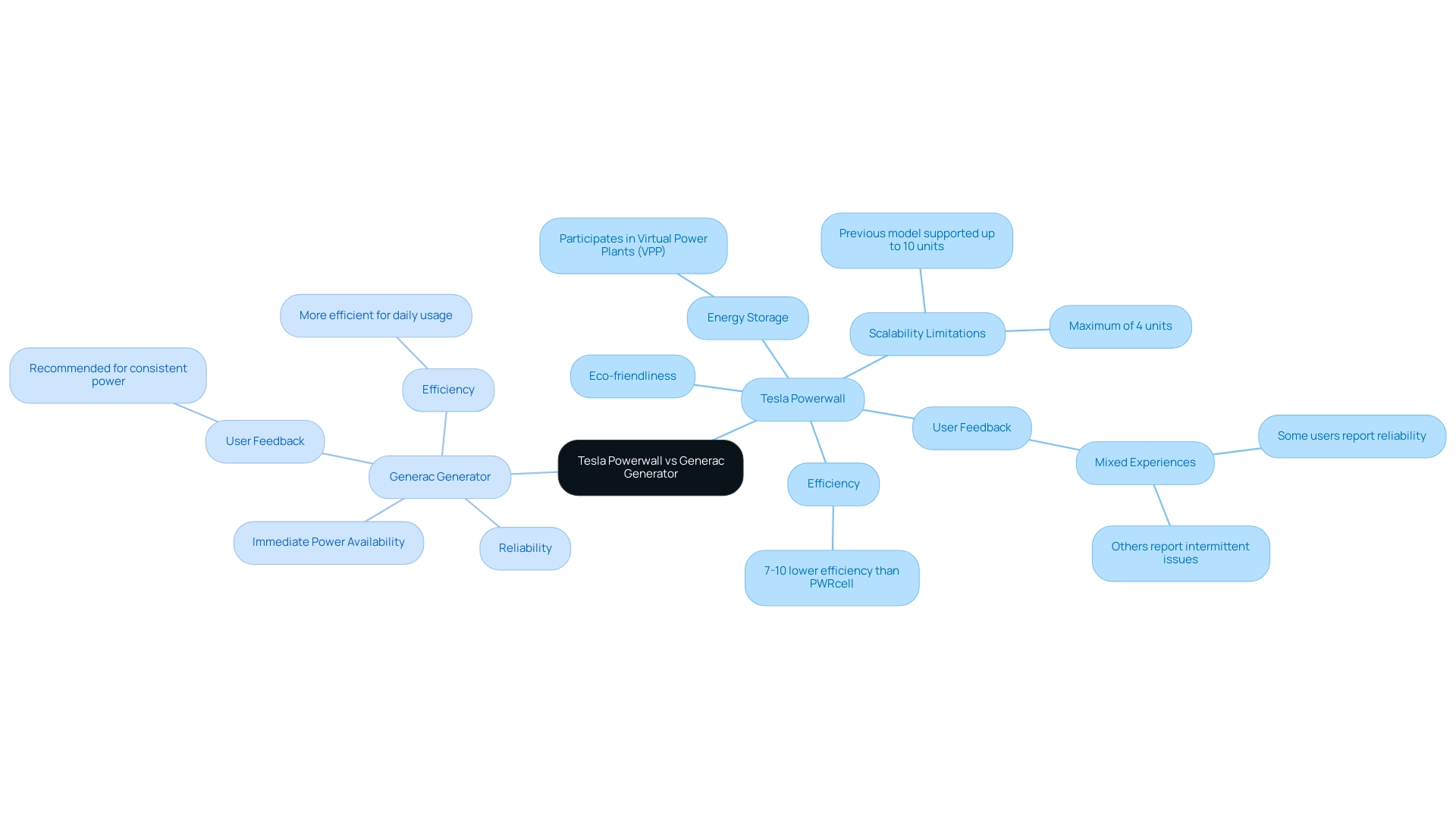Overview
The article compares the Tesla Powerwall and Generac gas generator, highlighting that the Tesla Powerwall is ideal for eco-conscious homeowners seeking renewable energy solutions, while the Generac gas generator excels in providing reliable backup power during outages. This is supported by the article’s detailed analysis of each system’s features, costs, and environmental impacts, illustrating how the Powerwall integrates with solar energy for sustainability, whereas the Generac offers immediate power without reliance on solar systems.
Introduction
In the quest for energy independence and sustainability, homeowners are increasingly faced with the choice between innovative battery systems and traditional generators. The Tesla Powerwall and Generac gas generators each present unique advantages tailored to different lifestyles and energy needs.
- While the Powerwall captures solar energy for seamless power storage, ideal for those looking to minimize their carbon footprint,
- the Generac offers immediate, reliable backup during outages, perfect for households in storm-prone areas.
As energy prices rise and environmental concerns grow, understanding the nuances of these options can empower homeowners to make informed decisions that align with their values and financial goals. This article delves into the features, costs, and real-world applications of both systems, guiding homeowners on the best choice for their energy future.
Understanding the Basics: Tesla Powerwall vs. Generac Gas Generators
When considering the Tesla Powerwall vs Generac gas generator, it’s important to note that the Tesla Powerwall is a rechargeable lithium-ion battery that collects power from photovoltaic panels or the grid, ensuring you have dependable backup electricity when the lights go out. One of its greatest benefits is its silent operation, seamlessly integrating with your home solar system to enhance savings. Many eco-conscious homeowners find this setup not only environmentally friendly but also economically savvy.
For instance, implementations of the battery storage system have shown considerable decreases in electricity costs, rendering it an appealing choice for those aiming to optimize their efficiency and sustainability. The Tesla battery storage system is priced around $11,000 to $14,000, depending on installation and additional features.
On the flip side, we have the Generac PWRcell, which features a modular design that allows for scalability up to 36 kWh with multiple cabinets. This flexibility is especially advantageous for property owners whose power requirements may change over time. The PWRcell’s cost for a fully loaded cabinet with six battery modules ranges from approximately $15,000 to $17,000, but it offers higher efficiency and more load capacity compared to other options, making it a compelling choice for those prioritizing adaptability and ecological benefits.
When the power goes out, the Generac gas generator automatically springs into action, delivering immediate energy to your home. While it’s not as quiet as some alternatives, its reliability during outages is a strong selling point for many homeowners seeking security during adverse weather conditions. The Generac PWRcell operates effectively in temperatures ranging from -10°C to 50°C and comes with a 10-year warranty, though retention rates can vary by product series.
Additionally, it is compatible with various energy systems, further enhancing its appeal.
The Tesla battery storage system, on the other hand, has a warranty of 10 years and operates within a temperature range of -20°C to 50°C. Understanding these operational differences is crucial as you weigh your options. When comparing the Tesla Powerwall vs Generac gas generator, the Tesla battery storage system excels in environments where solar integration and silent operation are priorities, while the Generac PWRcell offers dependable backup power and scalability when you need it most.
As you contemplate which option best suits your power requirements and lifestyle, consider how each system’s unique characteristics correspond with your home power objectives and the economic and environmental advantages they provide.
Pros and Cons: Evaluating Tesla Powerwall and Generac Generators
When considering the Tesla Powerwall vs Generac gas generator, homeowners find a compelling argument for pursuing autonomy and sustainability. With the capability to store renewable energy for peak usage periods or during outages, it greatly improves energy savings while showcasing a minimal environmental footprint. As Roger from VIC – 3093 states,
We are able to run our house entirely on renewable energy and battery power.
Investing in a $54,000 Solar Roof can yield effective savings of $16,200 thanks to the federal ITC, further incentivizing eco-conscious homeowners to utilize renewable energy. Additionally, government programs can provide further financial assistance, making renewable energy solutions more accessible. However, it’s important to consider that the initial installation costs can be steep, and to maximize its effectiveness, a photovoltaic system is essential.
The Powerwall 2 also offers a robust warranty structure, featuring a time-based warranty covering defects for 10 years and a throughput warranty that allows for unlimited cycles, equating to about 3,600 cycles over that period, ensuring less than 30% degradation. In contrast, when considering the Tesla Powerwall vs Generac gas generator, Generac gas generators offer a more budget-friendly installation and immediate power during outages, which can be a lifesaver in emergencies. Yet, they come with ongoing fuel costs, emissions that impact the environment, and maintenance that can be cumbersome over time.
Furthermore, it’s crucial to note that temperature can affect system performance, with higher temperatures leading to efficiency losses. Evaluating these advantages and disadvantages is crucial for property owners seeking to make a well-informed decision regarding their storage alternatives, especially when considering the Tesla Powerwall vs Generac gas generator, along with the financial and ecological benefits of solar heating solutions, such as the possibility of decreased utility costs and smaller carbon footprints.
Cost Analysis: Comparing Installation and Maintenance Expenses
When considering home energy storage solutions, eco-conscious homeowners should evaluate the initial investment in the Tesla Powerwall vs Generac gas generator as a crucial factor. For a Tesla energy storage system, installation costs typically range from $10,000 to $15,000, influenced by system size and specific installation needs. While this may seem steep at first glance, many find that the long-term savings on electricity bills can be substantial, especially when paired with solar panels.
In fact, the average payback period for a battery system is around 11 years, highlighting its potential for significant long-term savings. The latest battery storage system 3 provides improved features and efficiency in comparison to the battery storage system 2, which may further affect your choice based on your power requirements. In the discussion of Tesla Powerwall vs Generac gas generator, it’s noted that the Generac gas generator offers a more budget-friendly initial cost of around $5,000 to $10,000 for installation.
However, potential buyers should factor in ongoing fuel and maintenance expenses, which can accumulate over time. Although the upfront cost of a Generac may be appealing, when considering the Tesla Powerwall vs Generac gas generator, frequent use may lead to higher long-term costs. Additionally, when considering Tesla Powerwall vs Generac gas generator, it is noteworthy that Tesla Powerwalls are low-maintenance systems boasting an impressive round-trip efficiency of 90%, which enhances their overall value.
Homeowners are urged to evaluate these financial factors in relation to their consumption habits and budgets, taking into account that the monetary advantages of the Tesla Powerwall vs Generac gas generator rely on utility bill assessments and regional incentives, like tax credits or rebates for renewable installations. This comprehensive analysis can help you make an informed decision that best suits your resource needs and sustainability goals.
Environmental Considerations: Sustainability of Power Solutions
The Tesla battery system stands out as a top sustainable power solution, particularly when combined with solar panels. This innovative technology allows eco-conscious residents to harness clean power, significantly decreasing reliance on fossil fuels and resulting in zero emissions during operation. Notably, in 2023, Gigafactory Berlin achieved a remarkable milestone by sourcing 100% of its electricity from renewable sources, underscoring Tesla’s dedication to sustainability.
This transition not only aligns with individual sustainability goals but also positively impacts the environment. In contrast, when considering the Tesla Powerwall vs Generac gas generator, it’s clear that while Generac gas generators are known for their reliability in providing backup power, they emit greenhouse gases and rely on fossil fuels, which contradicts eco-friendly principles. For property owners dedicated to a reduced carbon footprint and sustainability, evaluating Tesla Powerwall vs Generac gas generator reveals that the Tesla energy storage system emerges as the better option for a greener future.
Environmental specialists stress that transitioning to renewable power sources is crucial in tackling climate change, making the Powerwall a smart investment for those looking to create a significant impact. Furthermore, alternative battery options, such as the LG Chem RESU and Sonnen eco, offer varying capacities and features that can cater to different power requirements, providing homeowners with choices that align with their sustainability goals.
Furthermore, Azalia Arellano, a Lead Engineering Technician, illustrates the personal advantages of investing in sustainable technology through her experience with Tesla. She shares how her equity awards have enabled her to replace a family vehicle, plan for the future, and even build a house, showcasing both financial and environmental benefits.
Furthermore, case studies illustrate the efficiency of heating technologies in home environments, such as a residence in Southern California that experienced over a 70% reduction in costs after installing a water heating system. As battery recycling technologies advance, implementing effective recycling processes remains crucial for reducing environmental impact, addressing concerns around battery disposal, and improving the overall efficiency of power systems.
Real-World Applications: When to Choose Powerwall or Generator
For eco-conscious residents equipped with solar panels, the comparison of Tesla Powerwall vs Generac gas generator highlights the Tesla battery system as a top option, providing a clever storage solution that enhances the benefits of solar power while ensuring support during outages. This feature is particularly beneficial for those living in areas prone to power interruptions or for homeowners eager to reduce their energy expenses. Additionally, the energy storage system can engage in Virtual Power Plants (VPP), presenting potential financial gains.
However, it’s crucial to be aware that the Powerwall 3 has a limit of four units for scalability, a reduction from the previous model’s capability of supporting up to ten units. For those whose homes frequently experience outages and lack renewable energy systems, evaluating the Tesla Powerwall vs Generac gas generator may reveal that a Generac gas generator is a more suitable option. It provides consistent, immediate power without the necessity of solar panels, appealing to individuals who prioritize reliable energy availability over eco-friendly alternatives.
Feedback from real-world users reflects this dichotomy; as one homeowner expressed, ‘Some owners claim it works no problem, others claim it never works, or only works intermittently.’ Furthermore, a case study titled ‘Energy Storage Priorities’ reveals that both the Tesla Powerwall vs Generac gas generator can store and supply backup power, although their efficiency varies depending on user priorities. For individuals focused on maximizing daily power use and achieving independence, the discussion of Tesla Powerwall vs Generac gas generator often leads to recommending the Generac system.
By exploring these practical applications and understanding how solar panels function, including their economic benefits, homeowners can make informed decisions that align with their energy goals and lifestyle in 2024.
Conclusion
Choosing between the Tesla Powerwall and Generac gas generators ultimately hinges on individual energy needs and priorities. The Powerwall shines in its ability to harness and store solar energy, offering a sustainable solution that reduces reliance on fossil fuels and lowers electricity bills over time. With its silent operation and integration with solar systems, it appeals to homeowners looking to minimize their environmental impact while enjoying the benefits of energy independence.
On the other hand, Generac gas generators provide immediate and reliable backup power, making them an excellent choice for households in regions prone to outages. While they come with lower initial costs, ongoing fuel expenses and environmental considerations must be factored into the decision-making process.
In the quest for energy solutions, understanding the distinct advantages and limitations of both systems is crucial. Homeowners are encouraged to evaluate their specific circumstances, such as:
- Energy consumption patterns
- Budget constraints
- Sustainability goals
to make an informed choice that aligns with their values. Whether opting for the eco-friendly Powerwall or the dependable Generac generator, each option presents unique benefits that can enhance energy security and contribute to a more sustainable future.
